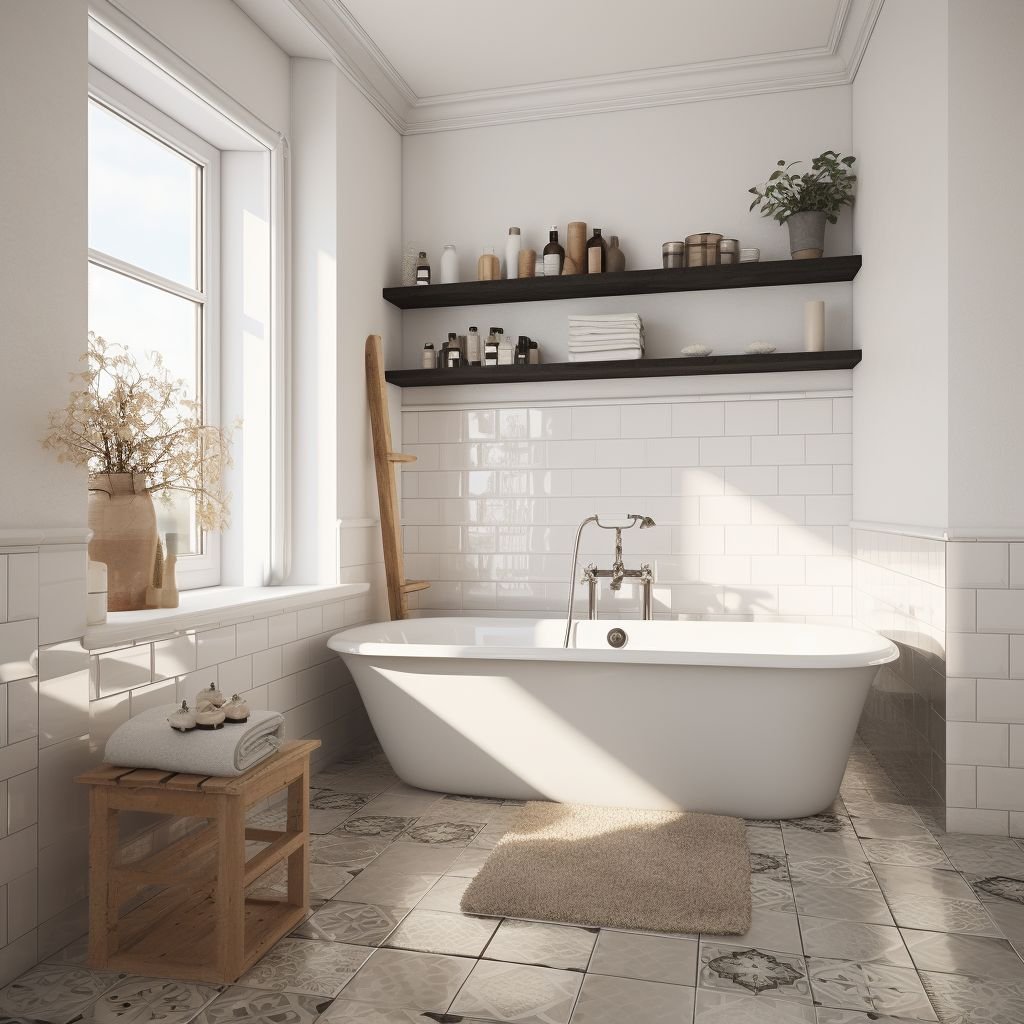Maintaining a clean and hygienic bathroom is a fundamental aspect of household upkeep. Yet, when it comes to deciphering how often bathtubs, showers, sinks, toilets, bathroom flooring, and walls should be cleaned, many of us find ourselves stumbling through a maze of uncertainty. Common misconceptions and oversights can leave even the most diligent homeowners with a bathroom that’s less than pristine.
In this comprehensive guide, we will not only answer the pressing question of how frequently you should clean different aspects of your bathroom but also highlight the common mistakes people make in determining the cleaning schedule. By understanding the pitfalls and adopting best practices, you can ensure that your bathroom remains a sparkling oasis of cleanliness, while safeguarding your family’s health and well-being.
Common Mistakes When Figuring Out How Often to Clean
Neglecting Regular Cleaning: One of the most common blunders is assuming that a bathroom can go for extended periods without cleaning. Ignoring regular maintenance can lead to stubborn stains, mold growth, and unpleasant odors.
Inconsistent Cleaning: Some people clean their bathroom sporadically, which can result in varying levels of cleanliness. Consistency is key to maintaining a consistently fresh and germ-free environment.
One-Size-Fits-All Approach: Not all bathroom elements require the same cleaning frequency. Overcleaning can be as problematic as undercleaning. It’s essential to tailor your cleaning schedule to the specific needs of each area.
Using the Wrong Cleaning Products: Using harsh or incompatible cleaning products can damage surfaces and fixtures. Conversely, using products that are too mild might not effectively combat stubborn grime and germs.
Ignoring High-Touch Areas: Focusing solely on visible surfaces while neglecting high-touch areas like faucet handles, flush levers, and light switches can leave behind hidden reservoirs of germs.
Underestimating Ventilation: Inadequate ventilation can exacerbate moisture-related problems like mold and mildew. Overlooking the importance of good airflow is a common mistake.
Forgetting About Preventative Measures: Many homeowners wait until problems arise before taking action. Preventative measures, such as using shower curtains or liners and sealing grout, can help reduce the frequency of deep cleaning.
Now that we’ve identified these common missteps, let’s delve into the specifics of how often each component of your bathroom should be cleaned and the best practices to maintain a sparkling and sanitary space.
1. Bathtubs and Showers:
Frequency: Bathtubs and showers should ideally be cleaned once a week or more often if they are heavily used. The moisture-rich environment of these areas makes them prone to mold and mildew growth.
Why: Frequent cleaning prevents soap scum, mineral deposits, and the growth of harmful fungi. Neglecting these areas can lead to health issues and damage over time.
Cleaning Tips:
Remove any visible debris like hair or soap scum before applying cleaning products.
Use a bathroom-specific cleaner or a mixture of equal parts vinegar and water to clean tiles, grout, and glass doors.
Scrub surfaces gently with a non-abrasive sponge or brush.
Rinse thoroughly to prevent residue buildup.
Frequency: Bathroom sinks should be cleaned at least once a week or as needed, depending on usage.
Why: Sinks accumulate toothpaste, soap, and grime. Neglecting their cleanliness can lead to the spread of germs.
Cleaning Tips:
Use an all-purpose bathroom cleaner or a mixture of dish soap and warm water.
Pay attention to faucet handles and drains.
Scrub with a soft brush or cloth.
Rinse thoroughly and wipe dry to prevent water spots.
3. Toilets:
Frequency: Toilets should be cleaned at least once a week or more frequently in high-traffic bathrooms.
Why: Proper toilet hygiene is crucial to prevent the spread of bacteria and odors.
Cleaning Tips:
Use a toilet bowl cleaner and a toilet brush to clean both the bowl and the exterior.
Don’t forget to clean the flush handle and toilet seat.
Use disposable disinfectant wipes for quick daily cleanings.
4. Bathroom Flooring:
Frequency: Sweep or vacuum the bathroom floor at least once a week and mop as needed.
Why: Dust, hair, and moisture can accumulate on bathroom floors, leading to an unhygienic environment and slippery surfaces.
Cleaning Tips:
Use a broom, vacuum, or microfiber mop for sweeping.
Use a bathroom-specific floor cleaner or a mixture of mild soap and water for mopping.
Pay special attention to corners and edges where dirt tends to collect.
5. Bathroom Walls:
Frequency: Bathroom walls should be cleaned at least once a month, or more frequently if you notice mold or mildew.
Why: Bathroom walls are susceptible to moisture, which can lead to the growth of mold and mildew.
Cleaning Tips:
Use a bathroom cleaner or a mixture of vinegar and water for general cleaning.
For mold and mildew, use a mixture of bleach and water or a commercial mold remover.
Scrub gently with a soft brush or sponge.
Ensure good ventilation to reduce moisture buildup.
